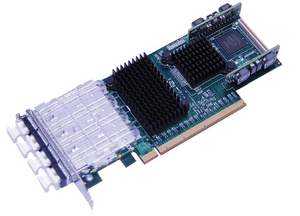-

- Sopto Home
-

- Special Topic
-

- PCI-E Card Knowledge
-

- PCIe and Optical Applications
PCI-E Card Knowledge
- Info about Network Interface Card Teaming
- How to Setup a Server with Multiple Network Interface Adapters?
- How to Reconnect an Internet Network Adapter for an Acer Aspire?
- 9 Things to Do When Your Internal Network Card Stops Working
- Ethernet Standards NIC for Home Networking
- What Is a Network Interface Adapter?
- How to Configure a Network Interface Card in Linux?
- How should Configure Your NIC for ISA and TMG?
- Recommended Network Card Configuration for Forefront UAG Servers
SOPTO Special Topic
Certificate



Guarantee
Except products belongs to Bargain Shop section, all products are warranted by SOPTO only to purchasers for resale or for use in business or original equipment manufacturer, against defects in workmanship or materials under normal use (consumables, normal tear and wear excluded) for one year after date of purchase from SOPTO, unless otherwise stated...
Return Policies
Defective products will be accepted for exchange, at our discretion, within 14 days from receipt. Buyer might be requested to return the defective products to SOPTO for verification or authorized service location, as SOPTO designated, shipping costs prepaid. .....
Applications

PCI-E NIC Cards provide redundant connectivity to ensure an uninterrupted network connection.
PCI-E NIC Cards are ideal for VM environments with multiple operating systems, requiring shared or dedicated NICs.
They are specially designed for desktop PC clients, servers, and workstations with few PCI Express slots available.
SOPTO Products
- Fiber Optic Transceiver Module
- High Speed Cable
- Fiber Optical Cable
- Fiber Optical Patch Cords
- Splitter CWDM DWDM
- PON Solution
- FTTH Box ODF Closure
- PCI-E Network Card
- Network Cables
- Fiber Optical Adapter
- Fiber Optical Attenuator
- Fiber Media Converter
- PDH Multiplexers
- Protocol Converter
- Digital Video Multiplexer
- Fiber Optical Tools
- Compatible
Related Products
Performance Feature
PCI-E Card Knowledge
Recommended


PCIe and Optical Applications
The PCI Express (PCIe) bus serves as a high-speed serial IO designed to provide connections between peripherals (graphics cards, memory/disk drives, external IO cards) and the Central Processing Unit (CPU). PCIe is implemented as a point-to-point connection using a pair of differential electrical interconnects (Tx/Rx) connecting two end point devices. PCIe bandwidth can be scaled by adding multiple lanes. The overall bandwidth can be increased by combining channels into x4, x8, x16, and x32 lane links.
PCIe peripherals typically take the form of expansion cards and are connected to the motherboard interface via slot connectors. Thus, the most common usage for PCIe is to make connections between chips inside-the-box where both the central processor and peripherals are co-located. PCIe is the dominant interconnect for CPU-based applications within desktop PCs, workstations as well as large, high-end servers.

10G PCI-e Gen 3.0 Quad Ports Fiber Server Adapter Card
A number of applications exist where PCIe may be used to connect a central processor with devices outside the box. As it is, even at 2.5 Gb/s (Gen1) and 5Gb/s (Gen2), physical connections are limited to a few meters in length using the available copper cables. Physical link distances decrease at higher data rates, and as such, operation at 8.0Gb/s PCIe Gen3 will further reduce the usable distance of copper cables.
Thus, users have expressed interest in optical solutions for PCIe applications requiring longer distances. Optical fiber based solutions allow connections over a much longer distance and are capable of providing better bit error rate performance, better immunity to electromagnetic interference and are thinner & lighter allowing for easier placement and routing.
Using optical solutions, nearly anything that is connected using PCIe today can now be connected remotely. This allows users to leverage the ubiquity of PCIe for many applications such as memory/disk system interconnects, high-end audio/video applications, high performance computing and multi-chassis system interconnects.
Using optical solutions, nearly anything that is connected using PCIe today can now be connected remotely. This allows users to leverage the ubiquity of PCIe for many applications such as memory/disk system interconnects, high-end audio/video applications, high performance computing and multi-chassis system interconnects.
For more info about PCI Express and optical fiber communication, please browse our website or contact a Sopto representative by calling 86-755-36946668, or by sending an email to info@sopto.com.



